The Top Challenges of B2C Brands – and How Amazon’s Buy with Prime Can Help Tackle Them
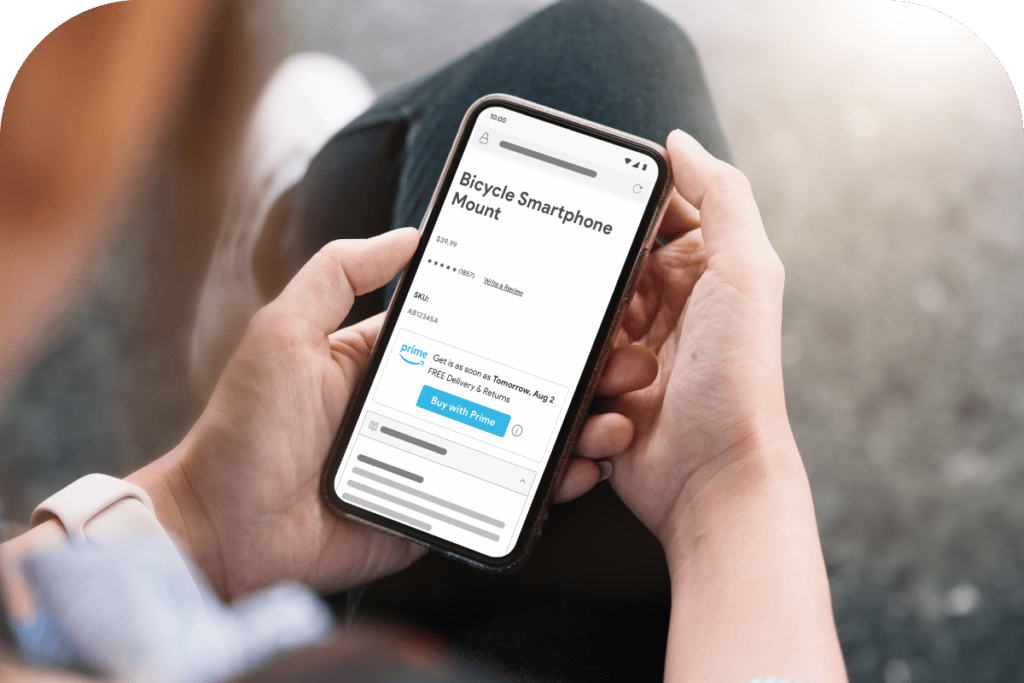
It’s no secret that direct-to-consumer (DTC) eCommerce is growing. Per SAP, DTC eCommerce sales in the US grew over 45% last year – accounting for 14% of total retail eCommerce sales. This growth has been fueled both by digitally native brands (think Casper and Dollar Shave Club), as well as established brands (think Nike and Levis).
It’s clear consumers are open to buying directly from brands. Yet, it’s not always easy to be a DTC brand. Sure, you may have great products. You might also have a really good looking website. But those factors are no longer enough to guarantee success.
For starters, third party cookies will soon be a thing of the past, making it more challenging for brands to deliver relevant, targeted marketing that attracts and converts shoppers. In addition, consumers have an overwhelming number of choices across just about every product category – and they have really steep expectations. If a brand fails to meet their expectations, they’ll likely look elsewhere.
In this guide, we’ll explore two key challenges DTC brands face – and how Amazon’s Buy With Prime can help them overcome these challenges to grow sales.
The Third-Party Cookie Will Soon be a Thing of the Past
Any modern marketer knows that a cookie is more than a delicious treat. It also describes a piece of code used to collect data. And that kind of cookie comes in two flavors.
First party cookies are placed on a website by the owner or publisher of the site. They collect user data for the website’s publisher or owner. In other words, they collect first party data. This information is often used to improve the user’s experience on the website.
Then, there are third party cookies. These cookies are placed on a website by a third party. The data is then provided to the third party, which they often use to deliver targeted advertising and marketing.
For years, the death of the third-party cookie has been foretold. Apple and Mozilla have already dropped support for third-party cookies, and while Google planned to do the same by next year, they recently pushed this initiative out until 2024.
The death of the cookie is inevitable – and it’s struck fear in the hearts of many marketers. Consumers demand personalized experiences. According to research from Accenture, 91% of consumers are more likely to shop with brands who recognize, remember and provide relevant offers and recommendations. How can brands do this without access to third party data?
91% of consumers are more likely to shop with brands who recognize and remember them – and provide relevant offers and recommendations.
Source: Accenture Pulse Survey
Brands must pivot to focus on collecting more first party data – in other words, data they collect directly from the shopper. Only then will they be able to offer the superior, personalized experiences modern consumers expect.
The good news is, many consumers are willing to share their information – as long as they know what’s in it for them. A survey from our friends at Yotpo found that 80% of consumers are open to sharing their personal data with a brand in exchange for personalized products, recommendations, discounts or services.
82% of consumers are willing to share their personal data with a brand in exchange for personalized products, recommendations, discounts or services.
Source: Yotpo Consumer Experience Survey 2021
Consumers Have Higher Expectations Than Ever Before – And Oftentimes, Brands aren’t Delivering
You invest a boatload of resources into SEO and digital marketing. Your investments pay off in terms of traffic – you’re getting a record number of visitors. This uptick in visitors has also made your first-party data collection efforts easier.
Yet, your conversion rate isn’t quite so stellar. What’s the deal?
There are any number of reasons why a visitor doesn’t follow through with a purchase. One of the top reasons? The person is just “window shopping” – with no intention of buying. According to research from Baymard, nearly 59% of US online shoppers have abandoned a cart within the last 90 days because they were “just browsing.” The unfortunate reality is, this is largely out of a brand’s control.
But let’s put aside those folks for a minute and focus on those who ARE ready to buy – but opt not to. What’s holding them back? This graphic from Baymard provides a snapshot of the key reasons.
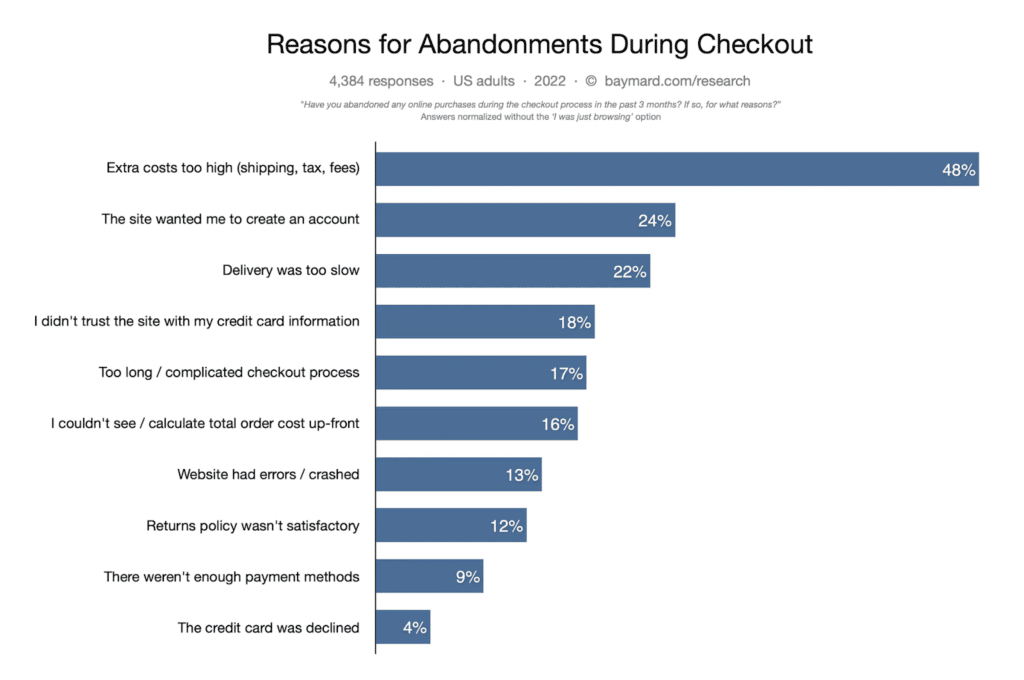
Upon closer examination, a few themes become clear.
Theme #1: Consumers Expect Fast, Low-Cost (Ideally Free) Shipping
Per Baymard, nearly half of consumers have abandoned a purchase because the extra costs – including shipping – were too high. And about a quarter have done so because delivery was too slow.
Consumers have high expectations for shipping experiences – largely thanks to Amazon. Amazon has trained them to expect fast, free shipping. And oftentimes, they’re not willing to settle for anything less.
Case in point? 66% of consumers expect free shipping on every single purchase they make online. And 62% expect their free shipping orders to arrive at their doorstep within three business days.
Brands that aren’t able to meet these expectations are sure to lose business.
Theme #2: A Clunky Checkout Process Turns Off Customers
A customer has browsed, added items to their shopping cart, and made it to the checkout process. But in the middle of the checkout, they jump ship. What gives?
Oftentimes, it’s because of a friction-filled checkout process. A quarter of shoppers have abandoned a purchase because the site wanted them to create an account, and 18% say they’ve done so because they didn’t trust the site with their credit card information. Other key checkout-related reasons include a long, complicated checkout process and a lack of payment options.
If a customer has to jump through hoops to make a purchase, they’re not going to make it. Providing a smooth, familiar checkout process is essential.
Theme #3: An Easy Returns Process is a Must
In an ideal world, your customers would keep 100% of the merchandise they buy. But that’s not reality. Many actively seek out return information prior to making a purchase. And if it doesn’t meet their expectations, they’re unlikely to make a purchase. Baymard found that 12% of consumers have abandoned a purchase because the return policy wasn’t satisfactory.
But what does a satisfactory return policy entail?
For starters, it’s free. According to an infographic from Invesp, 79% of shoppers want free return shopping.
In addition, a favorable policy makes returns easy. 92% of consumers say they’ll buy from a brand again if the return process is simple.
Though returns are never the goal, a favorable return policy can help you win customers – and boost repeat business.
Meeting Consumer Expectations Isn’t Always Easy
Consumers expect a lot from B2C brands. If you fail to meet those expectations, the penalties are high – even if consumers love your products. Consider the fact that, according to Salesforce, 71% of consumers have switched brands at least one in the past year.
But it’s not always easy – or cost effective.
Businesses must have a plan to meet (and surpass) customer expectations – while maintaining their brand identity and prioritizing first-party data collection. And, they must achieve all of these goals in a way that preserves profits.
Introducing Latest Tool in Your DTC Tool Belt: Amazon’s Buy with Prime
Amazon recently released a new tool, Buy with Prime, that allows brands to grow sales and collect data on their own dot com – while providing shoppers with a fast, familiar checkout process they’ve grown to love.
How exactly does it work?
A shopper lands on your eCommerce site – either organically or as the result of a digital marketing initiative. For example, perhaps they see an ad for a health and wellness brand. They click through and end up on a landing page for a vitamin supplement to boost energy and focus. They scroll to add the item to their cart – and they see a button that says “Buy with Prime.”
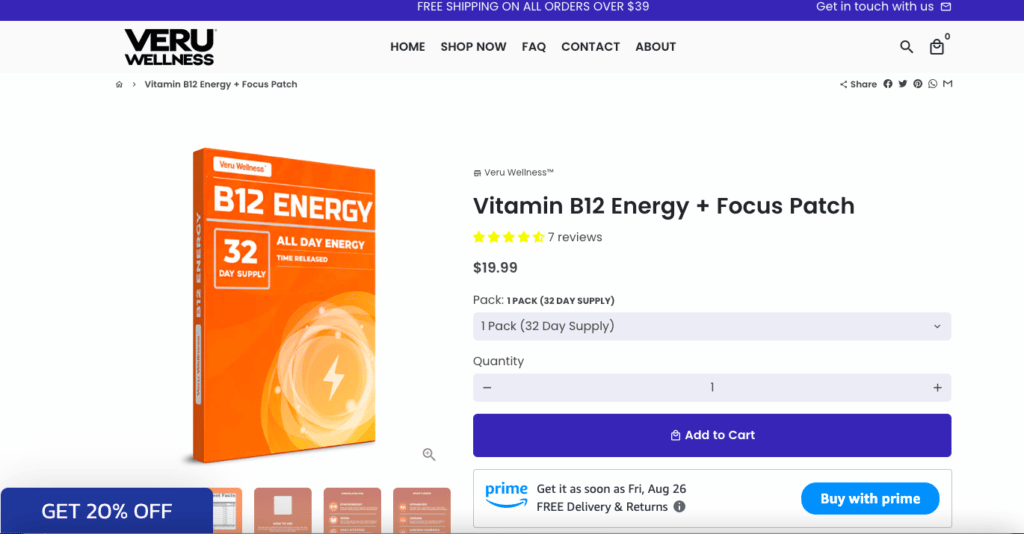
The customer clicks the button – and is taken to the Amazon login screen.
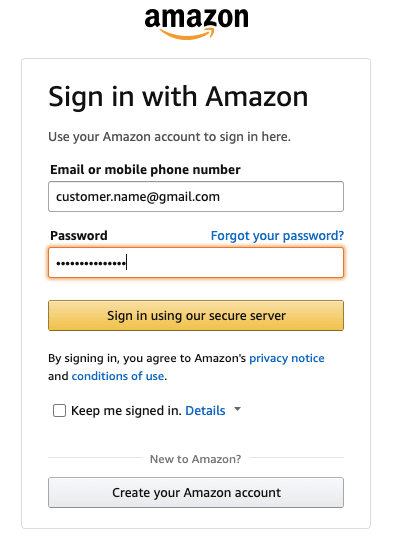
From there, the shopper can select their preferred shipping address and payment form – pulled from their Amazon Prime account.
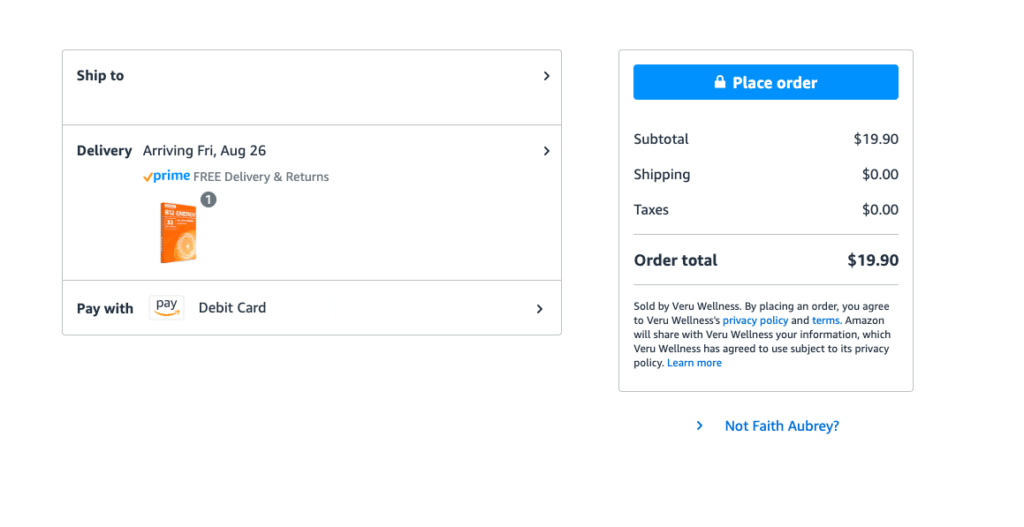
The customer hits “Place order,” and the work is done. No need to create an account. No need to input any information.
The customer then receives notifications about shipping and delivery like they would if they purchased something on Amazon.
The customer experiences a super simple checkout process they’re familiar with as a Prime member. And, they get free and fast shipping. What’s more, the brand is able to keep the customer on their own dot com – which helps them grow sales and own the customer relationship.
Action Plan: Getting Started with Amazon’s Buy with Prime
Buy with Prime launched its pilot in Spring 2022. For now, the program is only open to brands using the Fulfillment by Amazon (FBA) service – and it’s by invitation only.
If you’re an FBA customer, it’s easy to get started with Buy with Prime. Here’s how.
Get Started with Buy with Prime
Step 1: Sign up for our Buy with Prime Offer — Fill out the quick form on this page. After we get your information, you’ll hear whether you’re approved for the officer.
Step 2: Meet with 1440 for Setup — If you’re approved, we’ll reach out to schedule a time to get you set up. This will involve linking your Amazon Pay, Seller Central and product catalog.
Step 3: Choose the Products That’ll Offer Buy with Prime — Determine which products you’ll offer Buy with Prime – and get them added to your site.
Step 4: Create and Install the Button — Deployment is quick and easy. You only need to create and install the Buy with Prime button once on your site
Step 5: Start Delivering Great Experiences, Right from Your Own Dot Com — That’s it! Now you’re ready to grow your sales and first-party data – while providing consumers with a great shopping experience.
Currently, Buy with Prime is in pilot. There are plenty of exciting feature releases planned in the coming months, so now’s the perfect time to get on board.
Start Growing Your DTC Sales with Amazon’s Buy with Prime
DTC is growing. But it’s certainly not without its challenges.
The death of the cookie will make it more challenging to deliver personalized experiences. Yet, customers’ expectations for great shopping experiences will remain at an all-time high.
Brands must be equipped to meet (and exceed) those expectations – while maintaining and growing relationships directly with their customers. Buy with Prime is an important new tool that can help make that a reality.
Ready to get started with Buy with Prime? Contact us today.